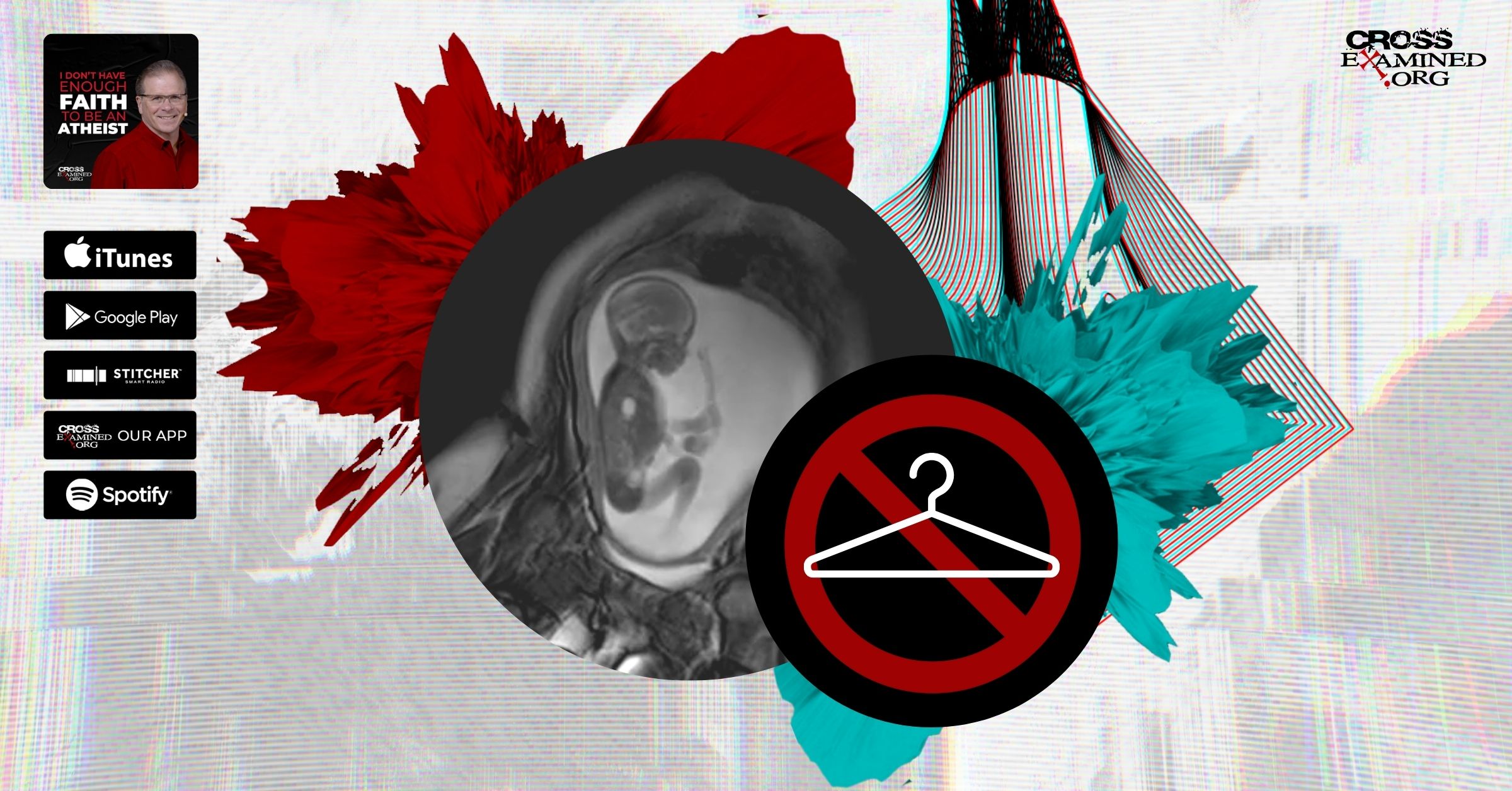Daniel Prophesied the Timing Of The Messiah
How did Jesus see himself? As we learn about Jesus’ Jewish context in the first century, we find that he made some staggering claims. First of all, Jesus spoke constantly about God’s kingdom. The phrase kingdom of God or kingdom of heaven appears more than 100 times in the Gospels. Jesus begins his ministry in Mark by saying, “The time is fulfilled, and the kingdom of God is near.” (Mark 1:15)
Okay, so what’s the big deal about that? And what does Jesus mean when he says the kingdom of God is “near”? Jesus was assuming that his audience would pick up on the ideas he was laying down. When a first century Jew heard the phrase “the kingdom of God,” their minds likely turned to a very specific prophecy in Daniel 2. Let’s provide some context before reading the prophecy. Daniel 2 describes King Nebuchadnezzar’s dream of an impressive statue crafted from four precious metals. As the dream unfolds, a large mountain grows from a mysterious stone, destroying the statue.
JESUS AND THE KINGDOM OF GOD
Let’s read the prophecy. Daniel 2:31-35 says:
“You, O king, were watching and behold, there was a single great statue; that statue, which was large and of extraordinary radiance, was standing in front of you, and its appearance was awesome. The head of that statue was made of fine gold, its chest and arms of silver, its belly and its thighs of bronze, its legs of iron, and its feet partly of iron and partly of clay. You continued watching until a stone was broken off without hands, and it struck the statue on its feet of iron and clay, and crushed them. Then the iron, the clay, the bronze, the silver, and the gold were crushed to pieces all at the same time, and they were like chaff from the summer threshing floors; and the wind carried them away so that not a trace of them was found. But the stone that struck the statue became a great mountain and filled the entire earth.”
The four parts of the statue represent four pagan empires, beginning with the Babylonians. Nebuchadnezzar is told by Daniel that he is the head of gold. Additionally, he tells him that a second kingdom inferior to Babylon will follow after him, symbolized by silver, and a third kingdom by bronze. Eventually, a fourth kingdom emerges that is initially strong like iron, but gradually weakens, as if it were a mixture of iron and clay. Note that the fifth kingdom — God’s kingdom — occurs during the time of the fourth kingdom (Daniel 2.26-43).
Here’s Daniel 2:44-45:
“And in the days of those kings the God of heaven will set up a kingdom which will never be destroyed, and that kingdom will not be left for another people; it will crush and put an end to all these kingdoms, but it will itself endure forever. Just as you saw that a stone was broken off from the mountain without hands, and that it crushed the iron, the bronze, the clay, the silver, and the gold, the great God has made known to the king what will take place in the future; so the dream is certain and its interpretation is trustworthy.”
Daniel explains that the four majestic beasts refer to four kings who arise from the earth. (7:17) After the appearance of four beasts, a heavenly “son of man” appears who seems to share divine honors. Then Daniel 7:9, 13-14 says: “I kept looking until thrones were set up, And the Ancient of Days took His seat; His garment was white as snow, And the hair of His head like pure wool. His throne was ablaze with flames, Its wheels were a burning fire….“I kept looking in the night visions, And behold, with the clouds of heaven One like a son of man was coming, And He came up to the Ancient of Days And was presented before Him. And to Him was given dominion, Honor, and a kingdom, So that all the peoples, nations, and populations of all languages Might serve Him. His dominion is an everlasting dominion Which will not pass away; And His kingdom is one Which will not be destroyed.”
This Son of Man is the king of the fifth kingdom, God’s eternal kingdom. Think about what Jesus is saying in the Gospels. He speaks of God’s kingdom. Then he declares that he is the Son of Man, the ruler of the kingdom that would come during the Roman Empire. An attentive first century Jew would understand that he is claiming he is the long-awaited Messiah who will end the reign of these beastly kingdoms on earth.
JESUS, THE “CUT OFF” MESSIAH
Jesus applies one more prophecy in Daniel to himself. According to him, the Son of Man must be handed over to the authorities and put to death. (Mark 8.31-32) Where does Jesus get this idea from? In a rather bizarre passage, Daniel 9 describes the Messiah being executed. Here’s Daniel 9:24-27:
“Seventy weeks have been decreed for your people and your holy city, to finish the wrongdoing, to make an end of sin, to make atonement for guilt, to bring in everlasting righteousness, to seal up vision and prophecy, and to anoint the Most Holy Place. So you are to know and understand that from the issuing of a decree to restore and rebuild Jerusalem, until Messiah the Prince, there will be seven weeks and sixty-two weeks; it will be built again, with streets and moat, even in times of distress. Then after the sixty-two weeks, the Messiah will be cut off and have nothing, and the people of the prince who is to come will destroy the city and the sanctuary. And its end will come with a flood; even to the end there will be war; desolations are determined. And he will confirm a covenant with the many for one week, but in the middle of the week he will put a stop to sacrifice and grain offering; and on the wing of abominations will come the one who makes desolate, until a complete destruction, one that is decreed, gushes forth on the one who makes desolate.”
There has been much ink spilled over this very difficult section of Scripture. For this video, I’m choosing to limit myself to three reasons why the passage has been interpreted as referring not only to the work of the Messiah, but when he would arrive. In the prophecy, 490 years, or about 70 weeks of time, will pass between Jerusalem’s restoration and the coming of the Messiah. The phrase cut off implies that this Messiah will die. Jesus treats the Son of Man in Daniel 7 and the Messiah in Daniel 9 as one person. Additionally, the prophecy links the death of the Messiah with the destruction of the city and sanctuary, meaning Jerusalem and the Temple . As a result, animal sacrifices will cease. Jesus himself mentions the abomination of desolation coming during his Olivet Discourse and predicts that Jerusalem and the Temple will be destroyed. Let’s now look at the dates for this astonishing prediction.
JESUS CAME RIGHT ON TIME
Many commentators believe that the “sending forth of the word to restore and rebuild Jerusalem” happened when the Persian King Artaxerxes commanded the Temple to be rebuilt in 457 BC. (Ezra 7) From there there’s the seventy weeks of years, which equals 490 years. That’s 33 AD, that’s the year many scholars believe Jesus was crucified! This is when Daniel says Messiah will be cut off. And then by 70 AD the city and sanctuary were destroyed.
You don’t have to trust my math. Let’s look at what the Jewish historian Josephus had to say: “We are convinced…that Daniel spoke with God, for he did not only prophesy about future events, as did the other prophets, but he also determined the time at which these would come to pass.” (Antiquities 10.267-68)
And here’s the French mathematician Blaise Pascal. (You know…the guy who came up with probability theory): “One must be bold to predict the same thing in so many ways. It was necessary that the four idolatrous or pagan monarchies, the end of the kingdom of Judah, and the seventy weeks, should happen at the same time, and all this before the second temple was destroyed.” (Pensees 11.709)
Scholars debate the exact dates of this prophecy, but regardless of how one calculates them, the 490 years between the restoration of Jerusalem and the coming of the Messiah occurred before the Temple was destroyed in 70 AD. The prophecy of Daniel has to be fulfilled in the first century.
Summing up, this background from Daniel gives us a glimpse into what many Jewish people in the first century longed for. Their hope was in the coming of God’s kingdom and the messianic Son of Man. Furthermore, this data explains why Josephus, writing after the destruction of the Temple, is so surprised by Daniel’s predictions. It also explains why a first-century Jew like Jesus could describe his own coming death-along with the destruction of Jerusalem and the Temple-as the fulfillment of biblical prophecy. Daniel did more than prophesy that the Messiah would come; he also predicted when he would come, what would happen to him, and what would happen to Jerusalem and its Temple. And it came to pass. During the first century. 2,000 years ago. Jesus of Nazareth, the proclaimer of God’s Kingdom and the Son of Man’s coming, was crucified 490 years after Jerusalem was restored by King Artaxerxes. This is rather stunning. The fulfillment of the prophecy goes to show that Jesus wasn’t a liar or a lunatic. He’s the long-awaited Messiah who came just when Daniel predicted.
Recommended resources related to the topic:
Counter Culture Christian: Is the Bible True? by Frank Turek (Mp3), (Mp4), and (DVD)
Jesus, You and the Essentials of Christianity by Frank Turek (INSTRUCTOR Study Guide), (STUDENT Study Guide), and (DVD)
_____________________________________________________________________________________________________________________________________________________
Erik is a Reasonable Faith Chapter Director located in Cedar Rapids, Iowa. He’s a former freelance baseball writer and the co-owner of a vintage and handmade decor business with his wife, Dawn. He is passionate about the intersection of apologetics and evangelism.
Original blog source: https://bit.ly/3LEzW9e











